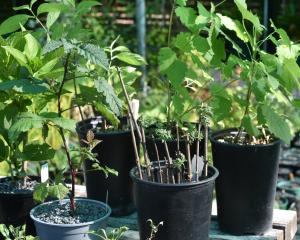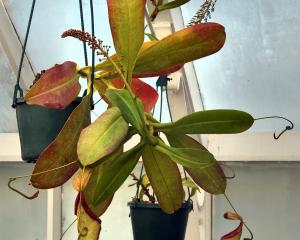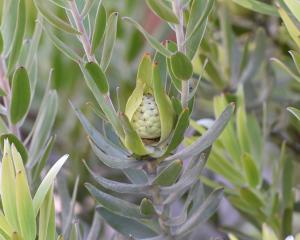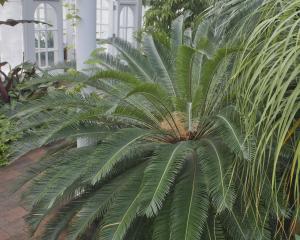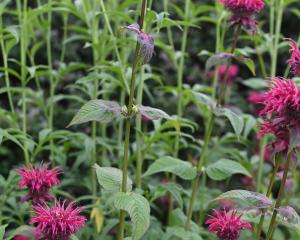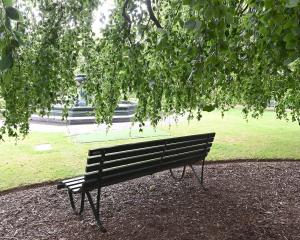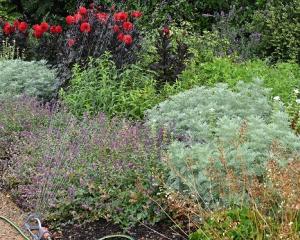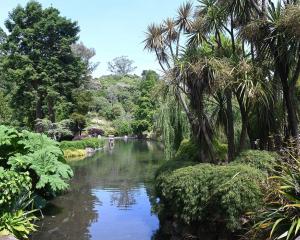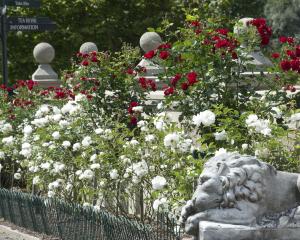
It can flower earlier if summer conditions give it the abundant moisture it enjoys, but normally it waits until cooler temperatures and rain come with the change of season.
Although only minimal rain has fallen recently, the Chilean bellflowers in the Rhododendron Dell at the Dunedin Botanic Garden have taken their chance and are flowering well.
In the Rhododendron Dell, they are planted on the edge of the native bush, just west of the Cherry Walk, clothing the trunks and branches of the trees they use for support.
Lapageria is an ideal climber for woodlands, which provide the semi-shaded conditions it requires. It ranges in height from about 4m-6m, sending up stiff grey-brown stems with dark green, leathery leaves.
The thickly textured pink bells are pollinated by hummingbirds in the wild, so without their help here, pollination tends to be haphazard, with only a few fruits appearing. Consequently, propagation is most reliable by cutting division or layering.
Although normally pink, there is a white form, Lapageria rosea var. albiflora, one of which is also flowering now.
On the edge of the same stretch of bush is the Chilean bellflower’s cousin, Philesia magellanica, a shrubby, wiry-stemmed scrambler which flowers earlier in the season.
They are the only two genera in the family Philesiaceae, containing only one species each. Together, though, they can provide exquisite flowering from December through to June.
• Garden Life is produced by Dunedin Botanic Garden. For further information contact Doug Thomson.




